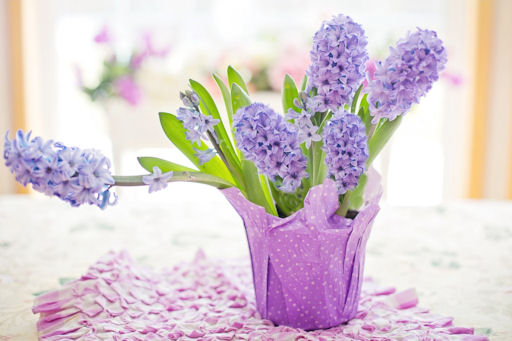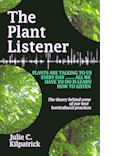Plant a Container of Hyacinths for Christmas
There is nothing more welcoming when you enter a room on a dull winter's day than the heady scent of cheerful Hyacinths.
A container of Hyacinth bulbs, planted by you, also make a lovely gift for a 'difficult to buy' Christmas present and the fact that you have grown them personally will be appreciated.

September, or at the latest early October, is the best time to buy your bulbs. To obtain the best results choose top quality, top sized ones that are specially prepared for growing indoors. Specially prepared hyacinth bulbs will need at least eight weeks either plunged or kept in the dark after you have planted them in order to develop a proper root system. With ordinary (or unprepared) bulbs it takes longer - ten to fifteen weeks according to the variety and only then can the containers be moved into the light. Therefore timing is important!

So once you have bought your bulbs, choose a suitable water-retaining container that complements the colour of the flowers you are going to grow and co-ordinates with your decor.
When planting the bulbs they should be set closely together, without touching each other or the sides of the container. Start by putting a layer of moistened bulb fibre into the container and lightly firm. Next take the bulbs and press them down gently on this base so that the tips of the bulbs are just below the level of the container rim.
More bulb fibre or compost should then be placed around the bulbs so the tips just show, say to within half an inch of the rim. Lightly firm the fibre with your finger tips to anchor the bulbs. The container should then be well watered.
To encourage the bulbs to develop strong roots, place the planted containers in a shady position in the garden after watering and then cover them with six inches of peat. This is the usual procedure with bulbs in ordinary pots whilst ornamental bowls can be wrapped in a sheet of moist newspaper to protect them. If this is impossible or inconvenient, planted containers can be stored indoors - choose a cool frost-free, dark but well ventilated place, where the temperature does not exceed 15c (50 f). In this case it is essential to keep the growing medium moist because, if the bulb fibre is allowed to dry out, fatal damage may be caused to both roots and the flower buds.
In November-December with the earlier varieties of ordinary bulbs bring the bulbs gradually out of the darkness. After a few days acclimatization in a dim corner the containers may be placed in full light, with the bulbs coming in to flower in about three to four weeks. An even temperature of 18c (65 f) suits them best. The containers should never be allowed to become dry, must be turned every few days so that the plants are evenly exposed to the light and do not grow one-sided.

Forcing is the term used to describe the process of encouraging bulbs to flower sooner than they normally would outdoors. Hyacinths are great bulbs to force since their heavy scent makes them popular for indoor use but there are other varieties you can try as well.
Narcissus, snowdrops, dwarf iris and crocus can all be forced.
When your forced bulbs have finished flowering, you can plant them out in the garden for spring flowering in subsequent years. Cut off the flowers and apply some liquid feed. Wait until the leaves die down before lifting and drying the bulbs. You can plant them in the garden the following year.
Since 1868 de Jager has been producing top quality, top sized bulbs.Check out their catalogues at deJager bulbs







